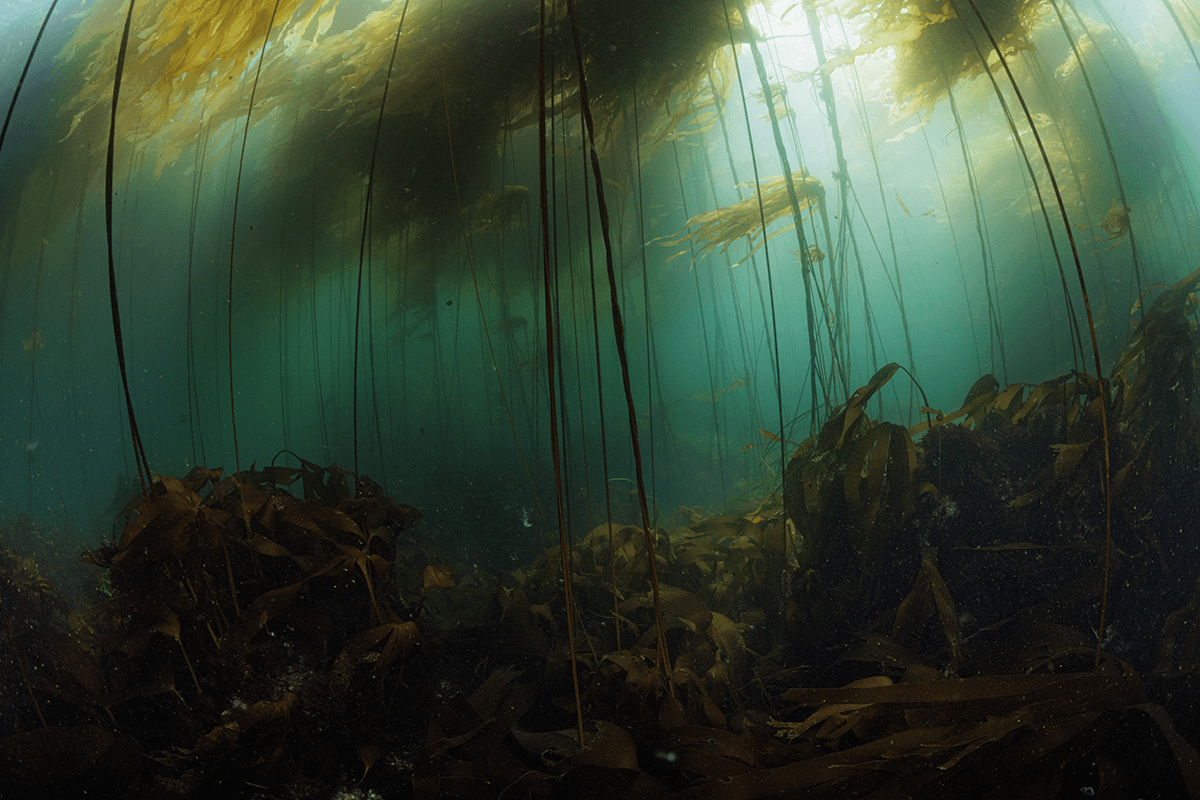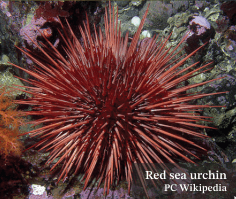| Helping the Kelp: An Ocean Reforestation Project |
 |
| Written by Claude Adams |
| 30 January 2023 |
|
Image by Markus Thompson | thalassia.ca A five-year project to replenish a kelp forest along a stretch of coastline in Gwaii Haanas National Park Reserve, National Marine Conservation Area Reserve, and Haida Heritage Site has achieved some outstanding results, according to project partners. This marine reforestation holds great promise for furthering the diversity of ocean life in Haida Gwaii waters. Kelps are fast-growing brown seaweeds that grow in forest-like clusters close to shore and serve as a kind of nursery for marine life. Kelp forests are sometimes called the ocean’s cafeteria – a feeding ground for many species of fish and other creatures. The project, co-led by Parks Canada and the Council of the Haida Nation and supported by other partners, is focused on three kilometres of the Gaysiigas Gwaay Murchison Island shoreline. The kelp forest in the oceans there had been severely diminished by a hyperabundance of guuding.ngaay red sea urchins who feed on growing kelp. This created a significant imbalance in the marine ecosystem. By removing more than 95% of the urchins in this underwater forest, project participants managed to nurture the regrowth of the lost kelp. “Before we did the work there was only a fringing band of kelp along the edges of the shoreline,” says Lynn Lee, a marine ecologist with Parks Canada. “Now we have kelp growing down to 40 and 50 feet deep because the urchins are not grazing all the kelp as it’s growing and there’s less grazing pressure.” What is involved here is the correction of a humanmade problem. A natural predator of the sea urchin – the sea otter – was hunted to near extinction in the mid-1800s in the maritime fur trade and this led to an explosion of the urchin population. These hyper-abundant urchins then grazed the kelp with uninhibited abandon. Imagine a kind of marine equivalent of woodland forest clear-cutting. The regrowth of kelp is good news for the entire ecosystem – for the abalone, salmon, rockfish and herring and more that are dependent on the kelp forest habitat and that are culturally important to the Haida. There’s also a benefit to the urchin fishing industry. “Those urchins left in the ecosystem,” says Lynn Lee, “have a lot more food to eat so they’re growing a lot more of their roe, and that’s what people eat; so there are fewer urchins but they are more full of roe and the roe is much sweeter and of better quality.” As part of the project, some of the harvested guuding. ngaay red urchins were donated to local communities and schools, and many people tasted this culturally important food, some for the first time. Under the guidance of the Gwaii Haanas Archipelago Management Board (AMB), Parks Canada, the Council of the Haida Nation, and academic partners will continue to survey the kelp forest restoration site to monitor for continuing kelp forest changes. They’ve already observed a growing diversity in the kelps and other species there, as the forest expands in depth and diversity. The AMB has permitted the commercial fishing industry to harvest urchin there to help keep urchin populations low – in this way, the commercial sector is working with project co-leads to help maintain conservation gains. For more information on the kelp project and the relationship between kelp and sea otters: parks.canada.ca/gwaiihaanas-nurture www.haidanation.ca/sea-otter-return/
The urchin gets its name from the Middle English word for “hedgehog,” but it makes for a significantly tastier meal. The red sea urchin of the northeastern Pacific has within him and her a delicious portion of flesh called roe, or uni, which is best eaten raw, or as a flavor enhancer. Roe is outstanding for the healthy diet, full of sugar, salt and amino acids, along with vitamins C and A and omega-3 fatty acids. But you’ll want to keep in mind while you’re indulging that the urchin is the Old Man (or Woman) of the Sea: If not eaten by a sea otter or other predator especially when smaller, the red sea urchin (Latin name: Mesocentrotus franciscanus) can live well beyond 100 years. Some have been dated as old as 200 years. Not bad for a creature that has no eyes or legs, and lives mostly on algae. And remarkably, they show no signs of senescence, or old age. The spines, meanwhile, offer good protection from other predators. With a five-toothed jaw on its underside, the urchin feeds on seaweed and other encrusting life. When there are too many urchins, their grazing can leave a barren ocean floor that does not have a lot of biodiversity. This is the kind of natural imbalance that the Gwaii Haanas kelp restoration partners are seeking to remedy. |






 The Ageless Red Urchin
The Ageless Red Urchin 



